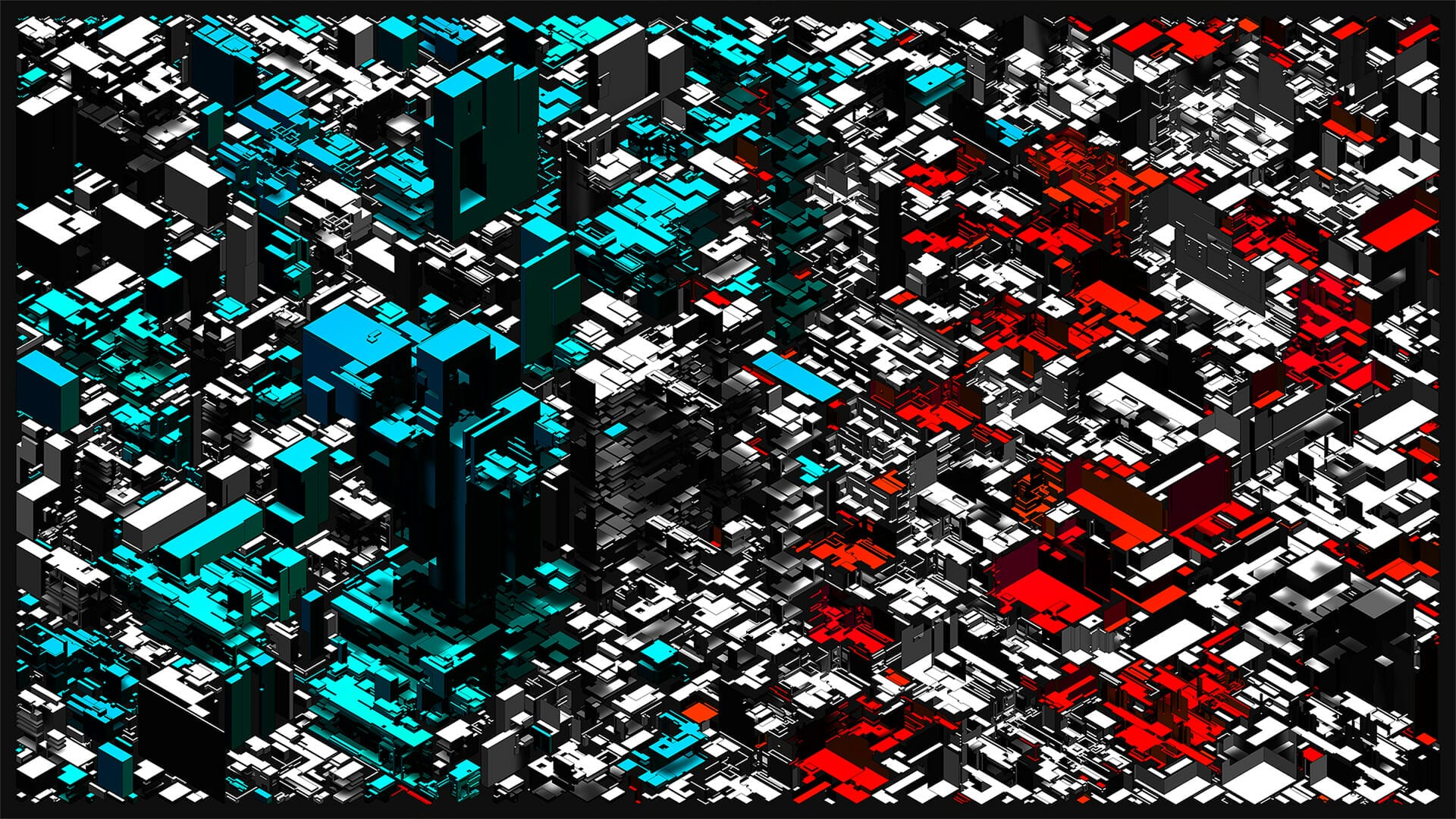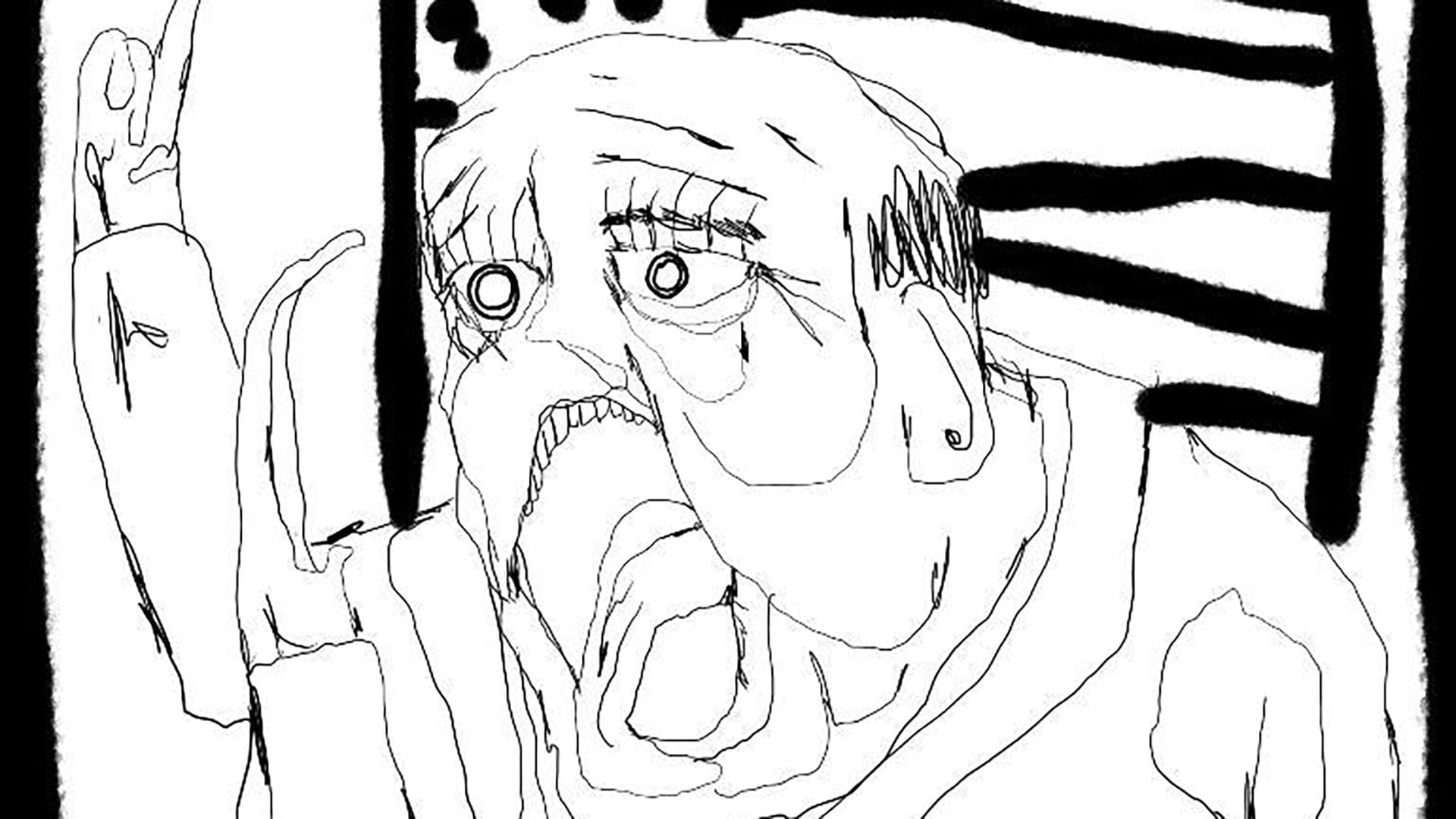
Frederik Vanhoutte: The Synesthetic Scientist
Medical radiation expert by day, creative coder by night, Frederik Vanhoutte aka Winterbloed traces the invisible line that connects art and science, utility and aesthetics.
“Creation is a compulsion,” says Vanhoutte, physicist and generative artist who fuels his artistic endeavors with inspiration drawn from ordinary phenomena, transforming the seemingly ordinary into intricate masterpieces of digital art.
Where Science Meets Art: Vanhoutte’s Creative Coding Journey
Frederik Vanhoutte possesses an intriguing duality: by daylight, a medical radiation expert committed to the noble task of transforming complex medical data into life-saving cancer treatments in a Belgian university hospital. With a Ph.D. in physics, he navigates the rigorous world of medical research. But when darkness settles, he enters a completely different world. In this realm, he is a creative coder, seamlessly melding art with science, merging utility with aesthetics, and metamorphosing cold, impersonal numbers into personal, vivid visual artistry.
The year 2003 marked the inception of Vanhoutte’s artistic journey when he stumbled upon Processing, a flexible software platform designed specifically for creative coding — A discovery that deeply resonated with his foundational knowledge in physics and innate curiosity towards the physical, biological, and computational systems that orchestrate our world.
From here, Vanhoutte’s journey in the digital art scene can be read as a series of milestones, one such significant one being his first minted work, “Lost Kiez 9888-6824” (2020), that epitomizes generative geometry.
Over time, Vanhoutte’s exploration has ventured far and wide across the digital art landscape, since then experimenting with a diverse array of mediums—ranging from traditional pen plots and prints to more experimental forms like cyanotypes. Each medium serving as a unique platform for accommodating an expanding repertoire of mental constructs in his artistic journey.

Extraordinary from the Ordinary: A Glimpse into Vanhoutte’s Artistic Philosophy
For Frederik Vanhoutte, art is a powerful tool for exploring and appreciating the intricacies of reality. It’s a deep-dive into the process of creation, tracing the path from simplicity to complexity, and reveling in the minute details and boundless possibilities inherent in every facet of existence, both natural and artificial.
Although he’s indisputably a physicist, Frederik’s art doesn’t orbit around rudimentary principles of quantum physics or relativity. Instead, it draws its essence from the countless hours he’s invested in assembling setups and devising models for solid-state experiments.
When encountering Processing as an artistic medium, suddenly, he found himself in possession of toy models free from the rigidity of practical applications. A revelation that sparked a profound artistic transformation, elevating these models from simple tools to potent mediums for artistic expression. They became vehicles for projecting his stream of consciousness into the tangible world, transforming his abstract thoughts into mesmerizing works of art.
As mentioned earlier, for Frederik, creation is not just a process; it’s an irresistible compulsion. He perceives alpha particles tracing paths within cells when raindrops strike the windshield, and never misses the entrancing whirlpool formed as the bath plug is released nor the intricate patterns of caustics that captivate him as he experiments with glasses on the kitchen table.
Suddenly, it’s the night, when Frederik finds himself behind the computer, staring at a mess of code and drawing random structures. A creative coding that fuels his curiosity in physical, biological, and computational systems.
Similarly, his artworks captivate the viewers and draw them into a trance-like state. “Chromatic Dazzle” being one of them, consisting of a collection of 511 pieces on fxhash, rich in generative geometry.
Another iconic piece of his is “Slicer concept: translate, rotate, skew, squash”: a GIF loop that has a similar feeling to “Chromatic Dazzle”, but with the generative geometry taking on a much more minimal style.
Digital art is Frederik Vanhoutte’s preferred medium as he believes that various forms of digital art, especially those that are not trying to emulate traditional art forms, are just as valid and important as music, dance, literature, and other means of expression.
Which leads to his distinctive artwork “Lamia”, an isometric presentation of the poem with the same name written by John Keats in 1819, where the work cycles through the 728 lines of the poem, with one line presented every 8 seconds.
His style is always changing and can be described as minimal at times, and exuberant at others. Sometimes monochromatic, other times garish, today it is pleasantly calming, but tomorrow it may be energetically nervous.
The piece “Ring feeder, specimen 17” is a beautiful example of Frederik Vanhoutte’s more calming and relaxing style of generative geometry in Processing. Here, the spectator can zoom in and get lost within the intricate details of the piece as it continues to follow its rotating motion.

Boundless Creativity: Vanhoutte’s Ongoing Journey
The work of Frederik Vanhoutte is a powerful blend of art and science that prompts thought, sparks curiosity, and offers a distinct perspective on the compelling dance between the two.
Amidst the vivid expanse of digital art, his journey continues, leaving traces of his boundless creativity, curiosity, and love of the beautiful intricacies of our shared reality.
Frederik is always exploring new ideas and concepts, sometimes coming together, sometimes left aside for years, and every now and then starting a new thread. Subdivision, flow, volume, slicing… A roadmap, in constant evolution.
fakewhale
Founded in 2021, Fakewhale advocates the digital art market's evolution. Viewing NFT technology as a container for art, and leveraging the expansive scope of digital culture, Fakewhale strives to shape a new ecosystem in which art and technology become the starting point, rather than the final destination.
You may also like
RubenFro: Dissolving Realities in Volumetric Point Clouds
RubenFro , originally from Italy and currently based in Tokyo, is a pioneering artist in the field
NFTs and the World Wide Web: Parallel or Divergent Paths?
As we navigate the complex landscape of digital innovation, it becomes evident that technological ad
6 – The Betrayal of Duke Dasher
Washington D.C., United States President Knudson sat in the custom-made chair that had been made for




